Description
Everybody knows brushing is important but toothbrushes alone cannot get into all the gaps between your teeth where most dental decay and gum disease begins. Piksters’ smart and revolutionary design can access even the most hard to reach places between your teeth and gums delivering a more effective and deeper clean.
What are Piksters and how do I use them to reduce gum disease?
How to use piksters correctlyPiksters interdental brushes are small cylindrical brushes designed to slide into and clean the spaces between the teeth. Unlike floss, they have lateral bristles that spring out to engage and remove the plaque in the small crevices in between the teeth. Dentists call these areas of furcations. As the picture shows floss tends to clean in a straight line across the two humps on either side of a furcation whereas an interdental brush can spring out and dig into these areas and disturb the plaque.
As they have a stiffened wire core you can clean the spaces between your teeth one-handed, unlike regular floss.This makes it easier for the average person to use. Whatever is easier to do you are more likely to do – so many dentists find that their patients like to use these in preference to floss.
In several dental schools in Europe the use of interdental brushes is now taught as the primary method of cleaning between the teeth, whereas in the past floss was mainly taught.
Piksters have plastic-coated wire, which many dentist and hygienists prefer, as they will not scratch any implants you may have.
Piksters ease of use tends to make people want to use them habitually – which is good because it is important to effectively remove the plaque and its bacteria at least once each day.
Why are there many different Pikster sizes?
There are small sizes which are made for teeth where the gaps are fine. There are large sizes which are useful for people with braces or gum shrinkage or the back teeth where the gaps are generally larger. There are ‘huge’ sizes for cleaning in large gaps where teeth have been removed, or where you have bridges or dentures that are held to your mouth by implants that have large spaces around them.
It is important that the brush moves against the teeth and the gum sufficiently firmly to remove the very sticky plaque, and also to stimulate the formation of protective keratin protein on the surface of the gum. Tissue that is ‘keratinised’ tends to be more resistant to bleeding and damage from normal tooth-brushing, whether that brushing comes from an interdental or normal toothbrush. The different sizes allow you or your dentist or hygienist to find the one that gives you optimal cleaning power and stimulation of the gum keratin.
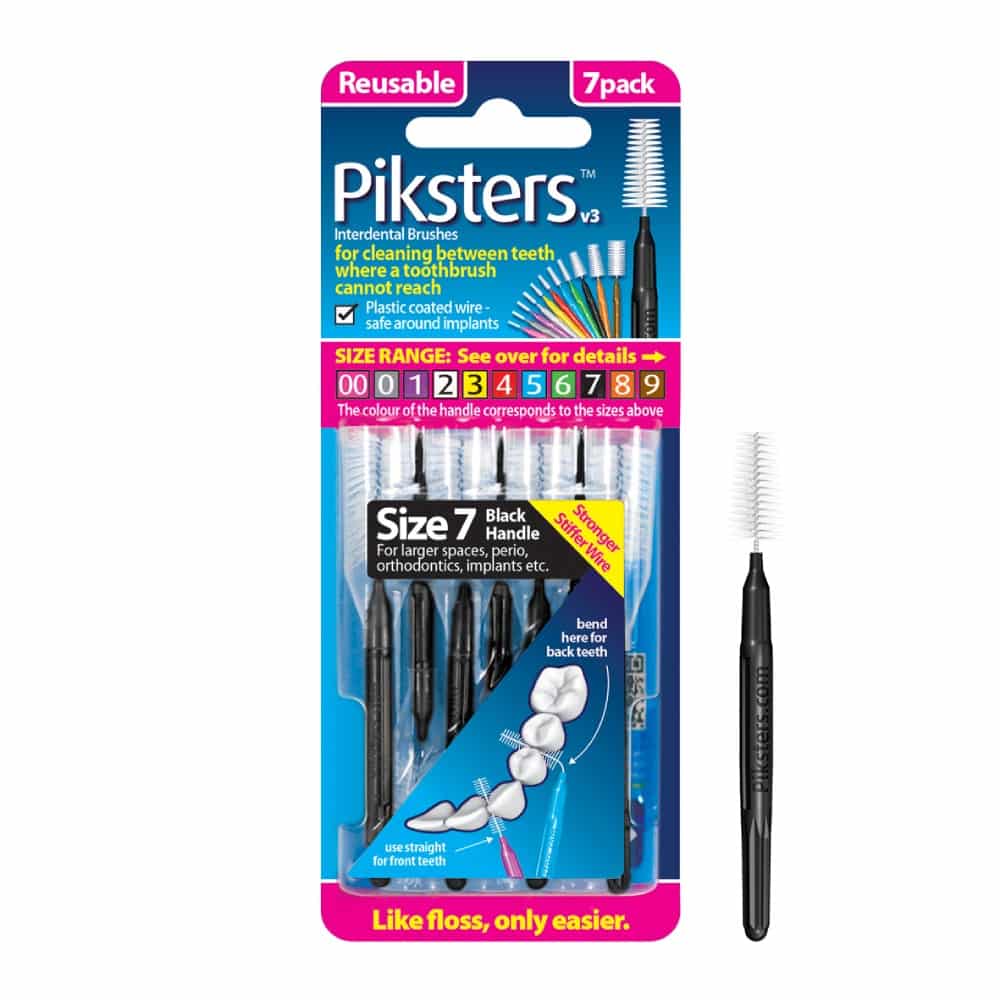

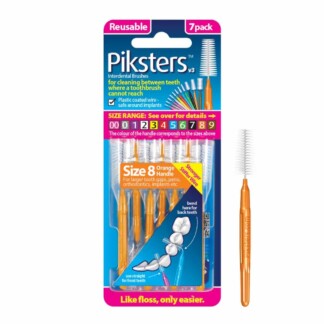
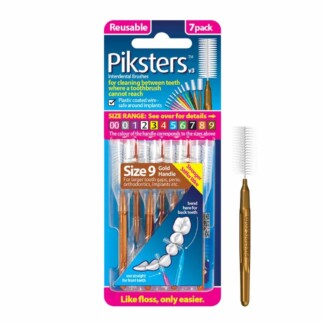
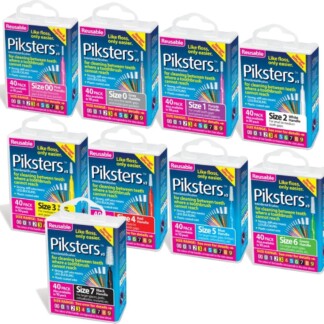


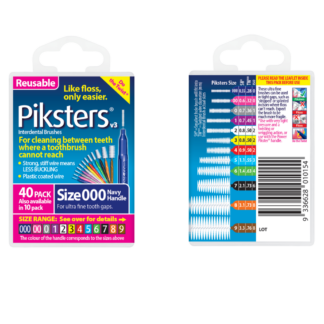

Reviews
There are no reviews yet